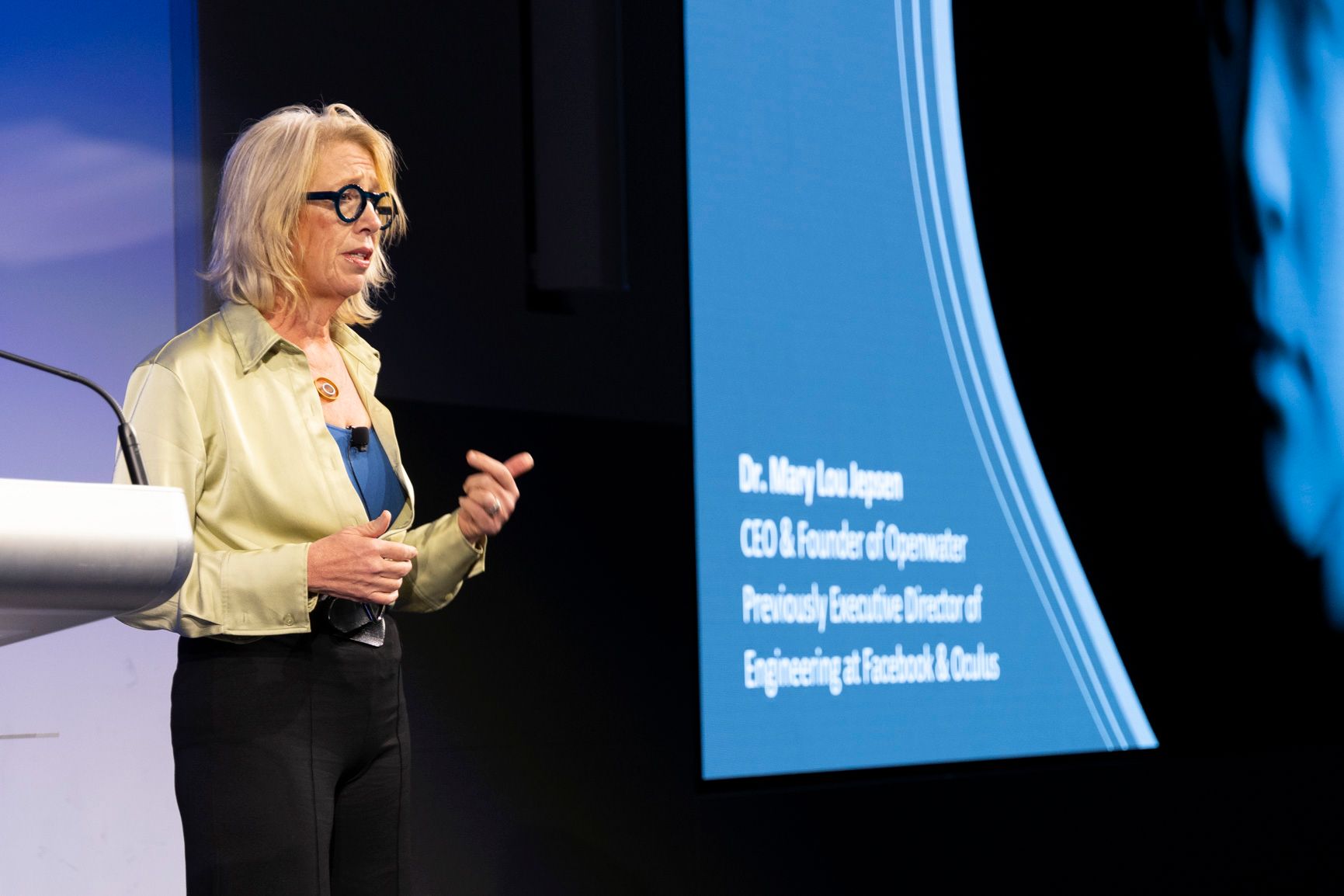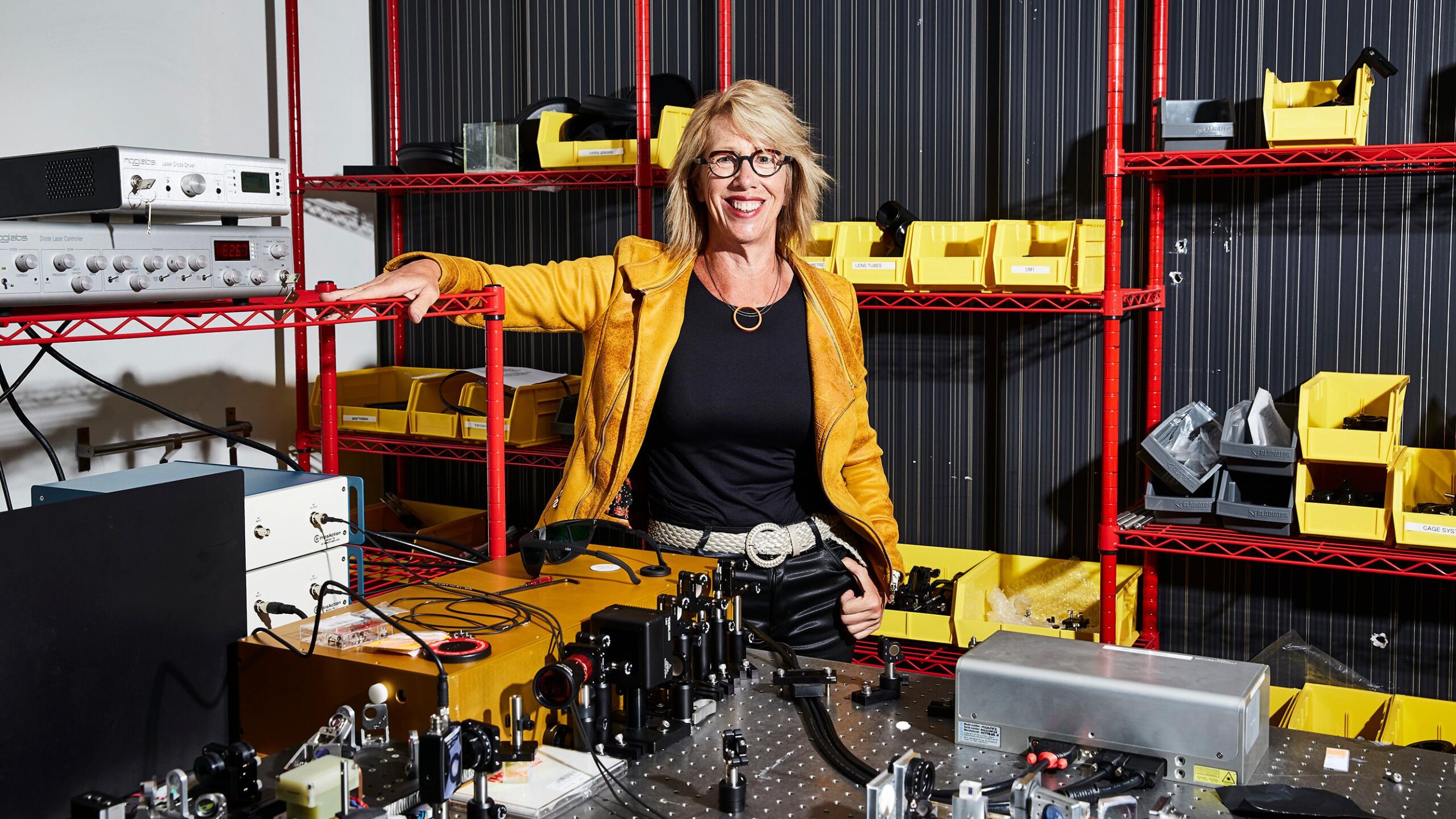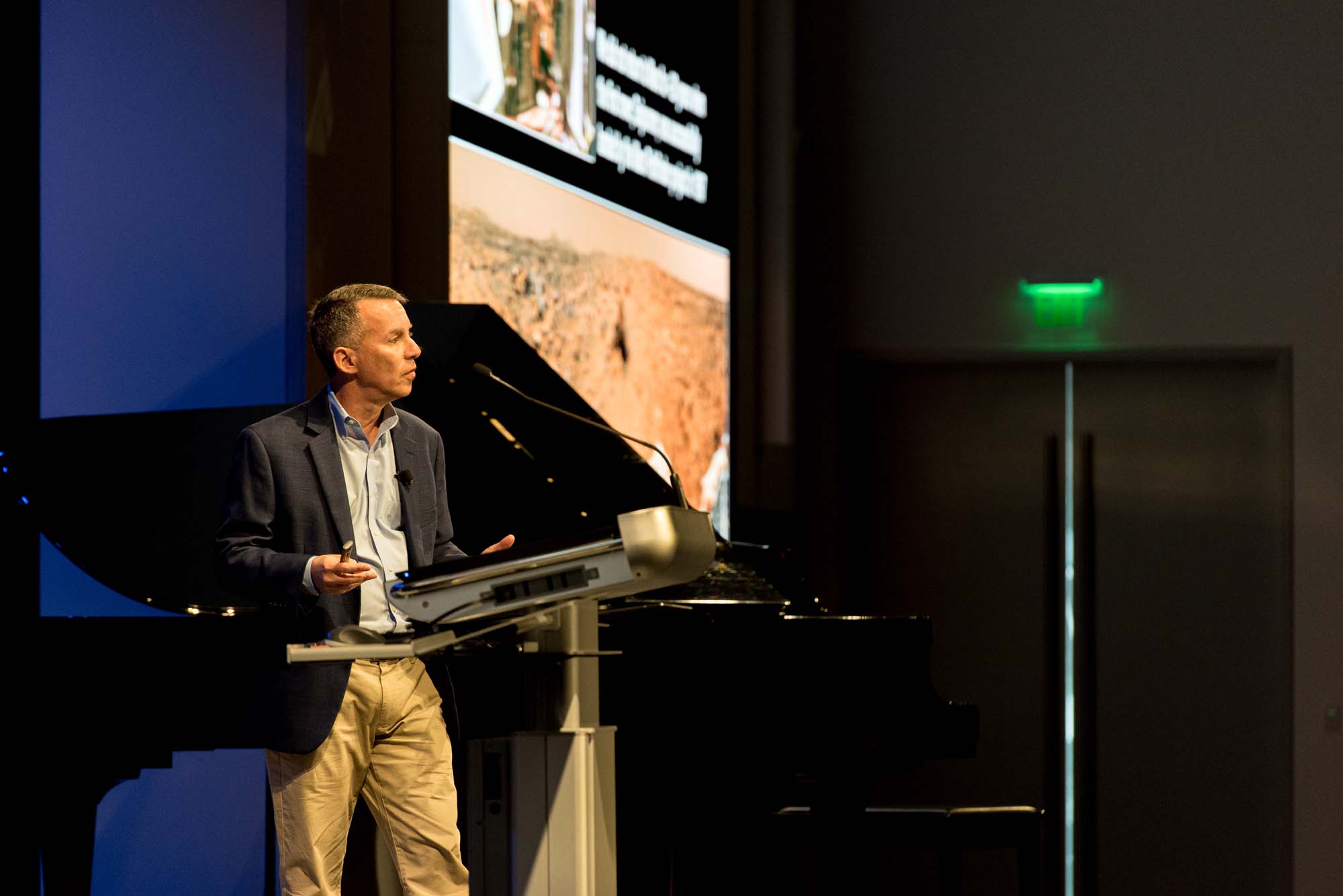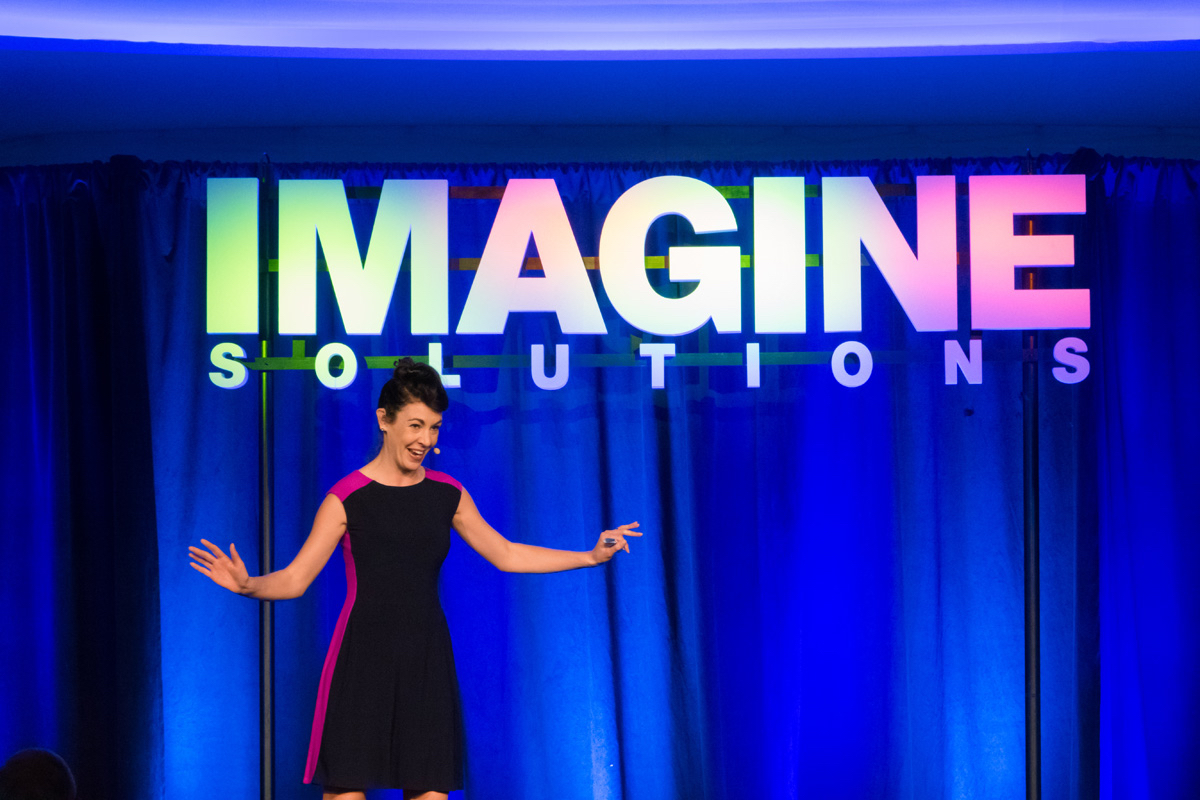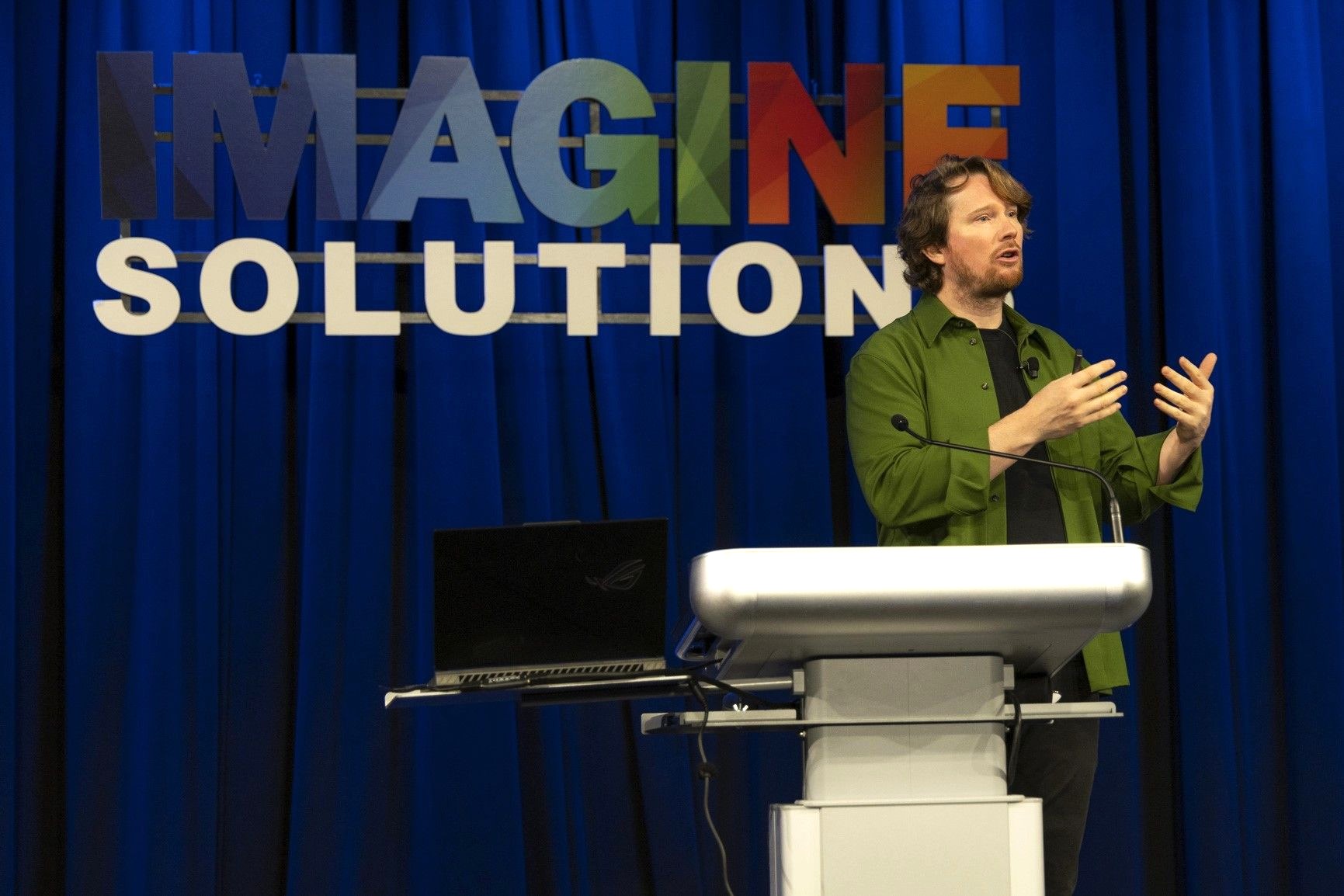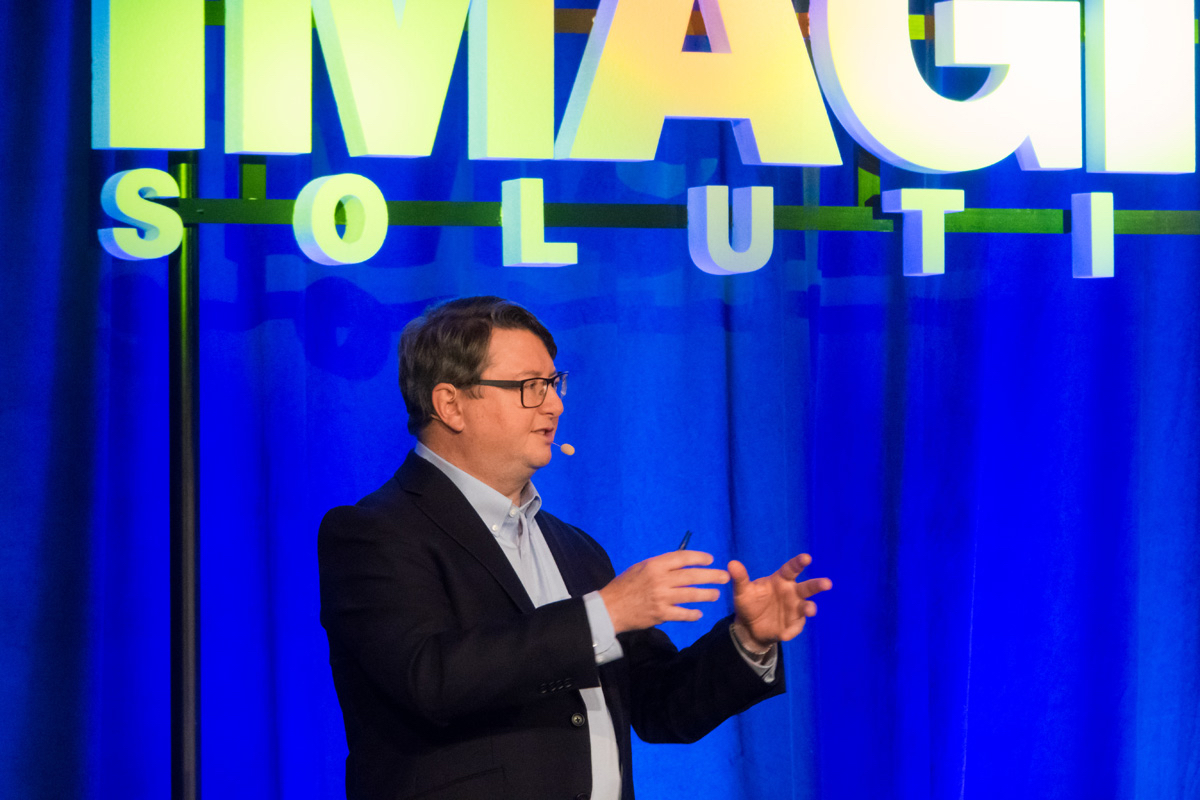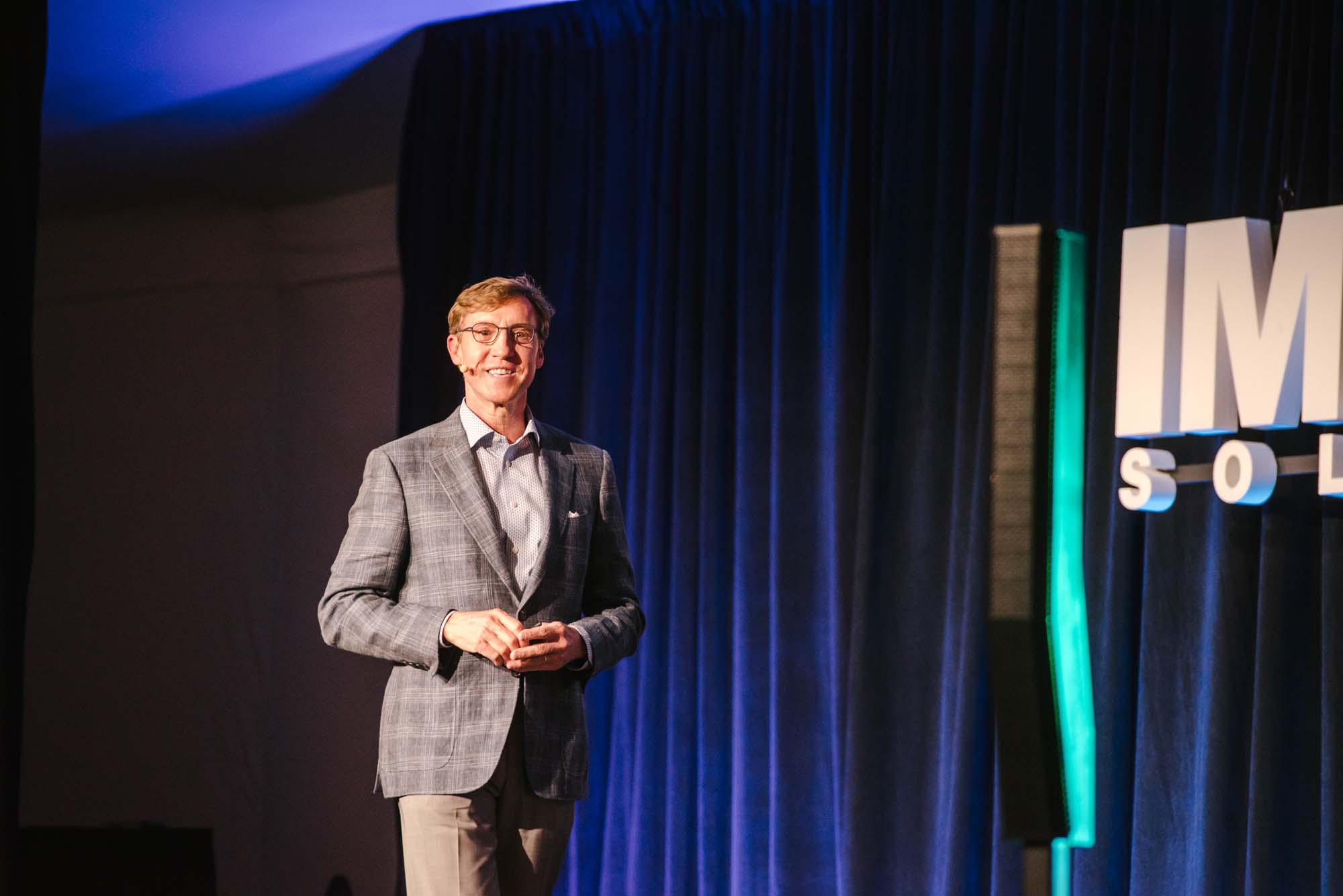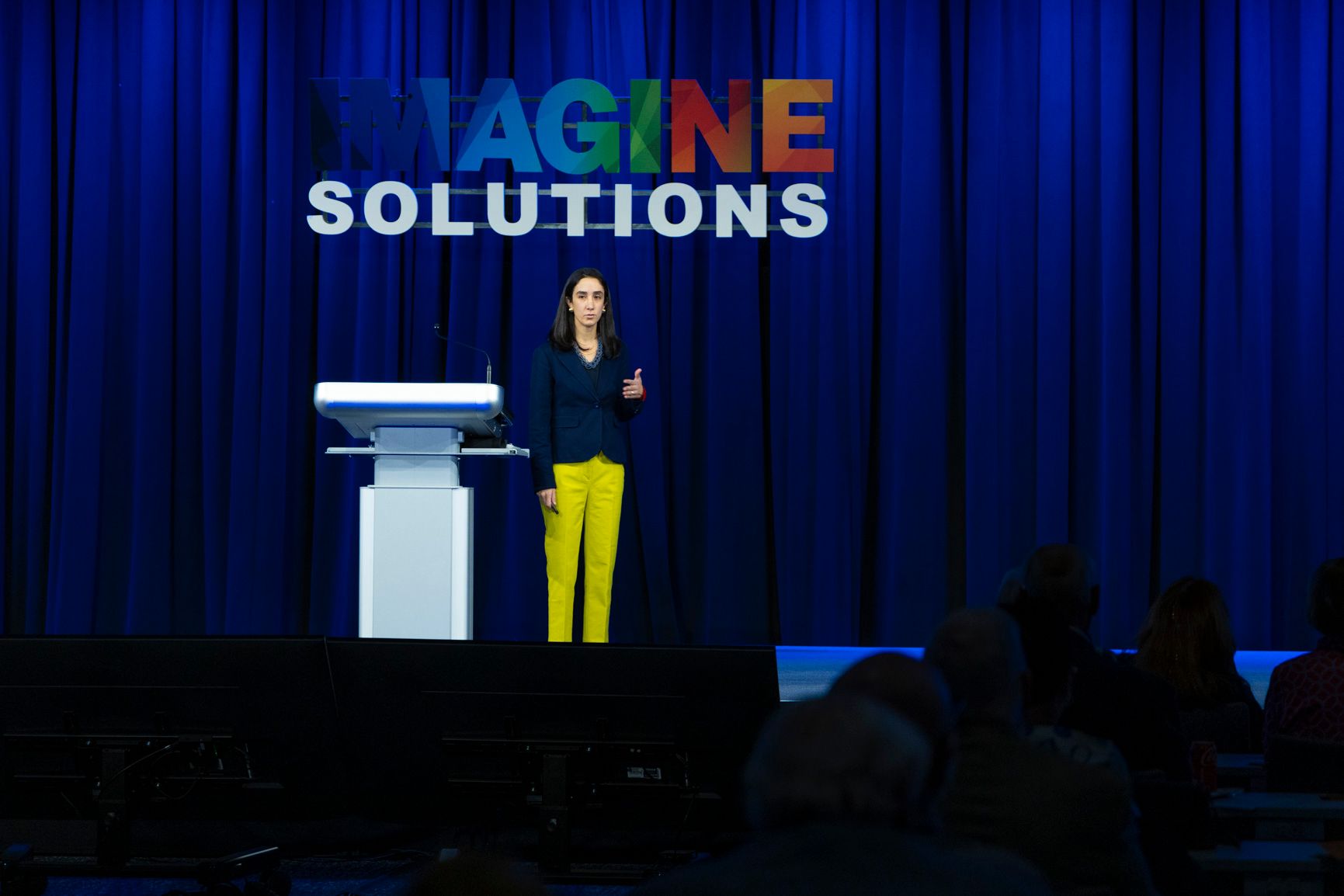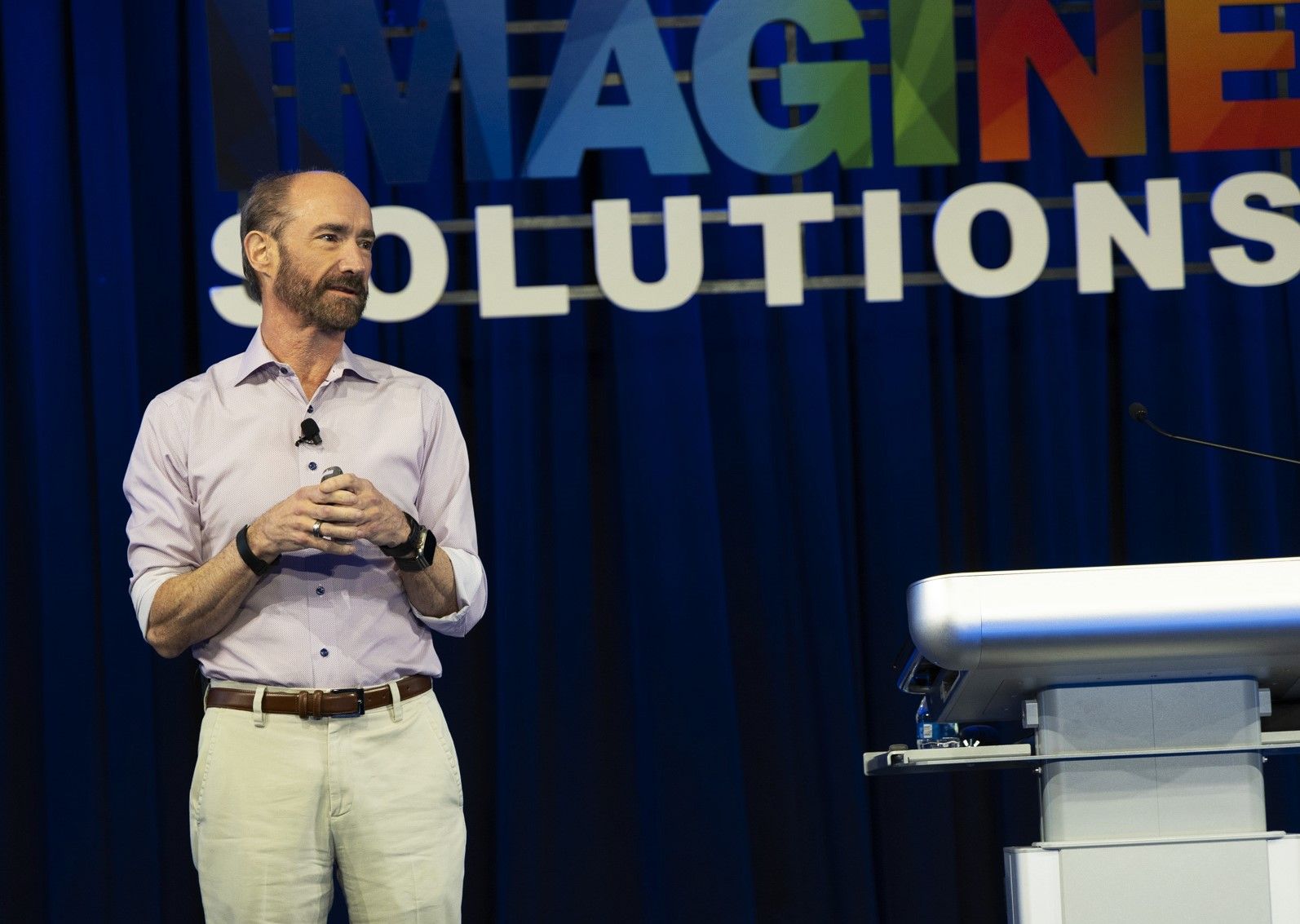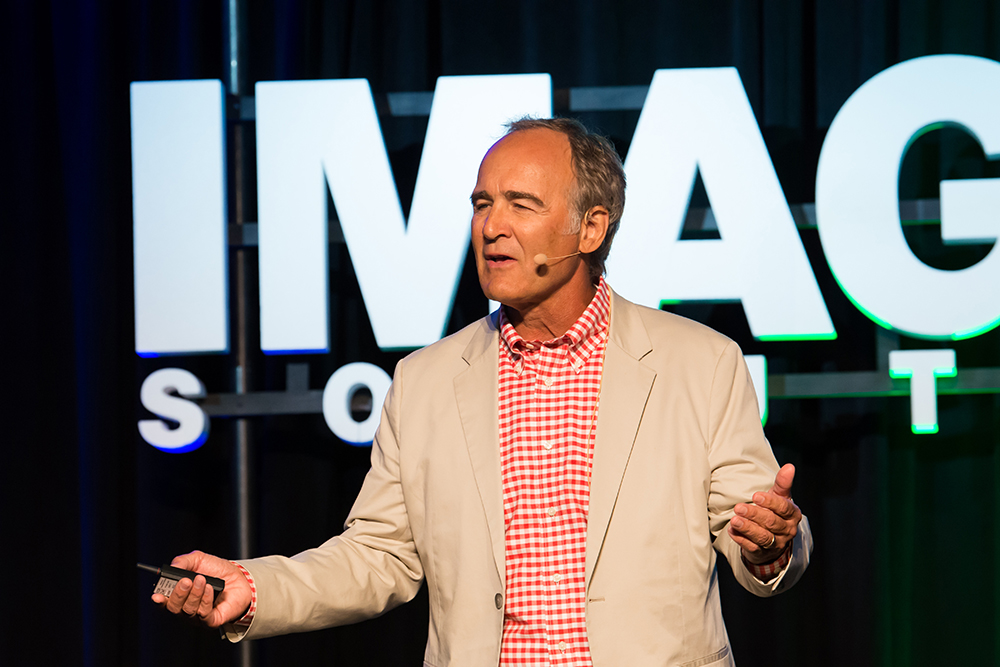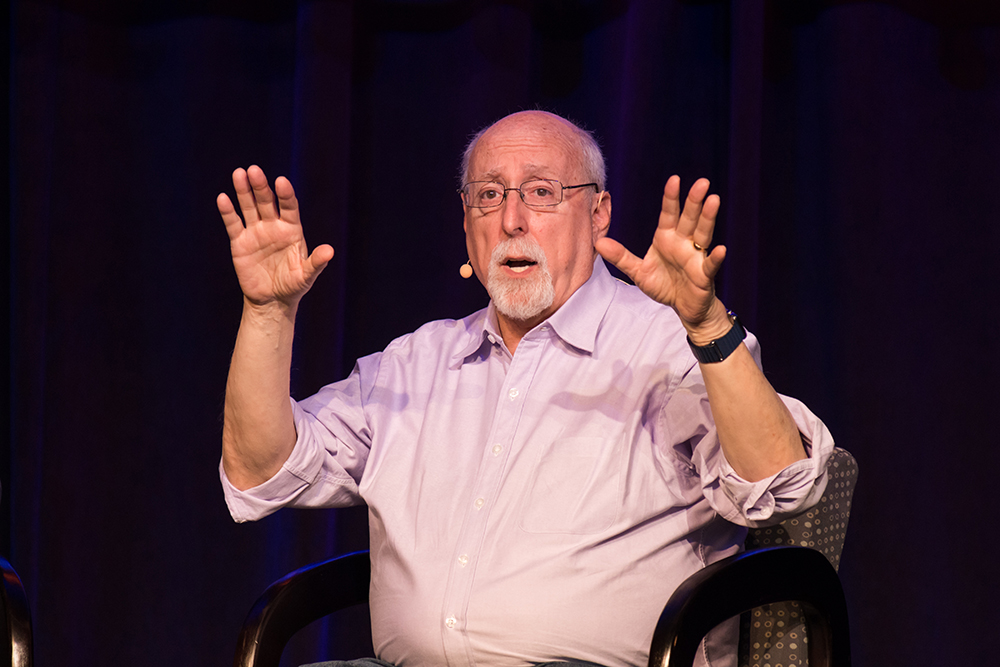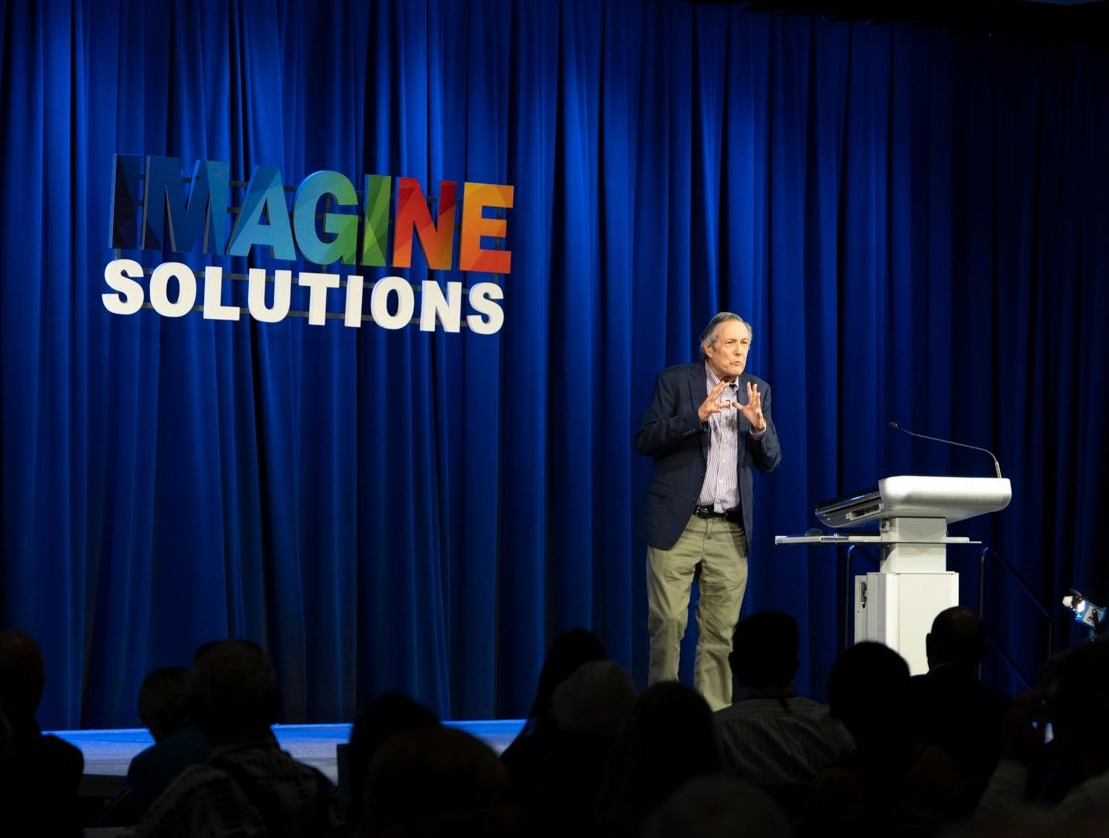The Genuis Revolutionizing Medicine
00.00
[Music] or it is time to introduce you to a genius or should I say another genius with 200 patents to her name her contributions have had worldwide adoption in head-mounted display HDTV laptop computers and projector products she was the technical force behind a generation of lowcost commu computing and Innovative consumer and Medical Imaging Technologies some of her Technologies are literally on the cusp of being able to read your thoughts Mary L Jepson has been called the Genius revolutionizing medicine she is one of Time magazine's 100 most influential people and CNN's top 10 thinkers in science and Technologies she's founded a
01.00
new startup called Open Water using light to see inside our bodies please Welcome to our stage Mary Lou [Music] Jepson welcome thank you it's great to be here so I want you to imagine imagine imagine a world of healthc care Diagnostics and Therapeutics augmented or replaced by silicon and software that includes drugs replacing drugs with silicon and software it's not crazy drugs penetrate our body so does infrared light so does sound above the sound we can hear ultrasound so does electromagnetics right now Fields like consumer electronics semiconductor device physics and artificial intelligence are coming together as I'll show you today to treat
02.02
and potentially cure deadly diseases deadly diseases in a way not possible right now for all transcending borders and income levels this isn't just a dream I'm going to show you how we're making progress in treating deadly cancers debilitating uh mental diseases as well as stroke doctors need better Solutions now drugs take 30 years and billions of dollars to get approval this is Kate Kate has a deadly cancer the standard of care hasn't worked for her so she's lucky she got into a clinical trial however she's not responding to the drug she's desperate this is it there are lots of Kates out there of many
03.01
ages their families are desperate for more and there isn't much more but three months ago Kate's doctors found out about us at Open Water we have a transformational foundational new device that might well it's giving Kate's doctor hope it could possibly change her outcome Kate's outcome or save her life if if we could get the device to her on time why with the same device we have stunning results on treating gleo blastoma which is what Kate has gly blastoma is 100% deadly form of brain cancer but with the same device when we change the software we're treating severe clinical depression and also large vessel occlusion stroke the severe type of stroke
04.00
a little bit more detail on that if you look on the right here are results in mice where we're massively shrinking the tumor and we're doing that with a 10minute dose of ultrasound of therapeutic level ultrasound lower level than has been used on pregnant women and their fetuses for the last 50 years if we do this experiment again we should probably give a second dose on day day five but these mice have been through autopsy and what we've shown is we're not harming any of the healthy tissue unlike standard of care which is chemotherapy or radiation therapy that we know harms the healthy tissue further if we change the software level you'll see in the middle we're treating severe depression we're treating it because lots of things cause severe depression but we can see on a scan if you look at the scans of the brain on the top the one on the side shows over iring neurons in something
05.00
called the default mode Network we treat there and stop those neurons from overfiring and the patients two-thirds of them in an ongoing study at University of Arizona have gone into remission from severe depression that's better than most any drug further we're diagnosing stroke where if you have a severe stroke the trick to treatment is fast diagnosis if you can detect the stroke and get this the stroke victim to care within a two-hour window there's 90% chance of no neural deficit whatsoever it's a time to diagnose this crisis and so we need to be able to diagnose it like we can a heart attack in the ambulance and get the person to the right care all with the same device so we're doing this how are we doing this we're riding Moors law to new places the ever doubling transistor density predicted by the founder of Intel more
06.00
than 50 years ago we're using a camera chip that's in every single one of your smartphones we take the lens off of it and guess what it's got pixel sizes with that shink that are the size of the wavelength of light so we can see the waves in the wavelength of light and we can read those waves like a sailor can read the waves Out on the Ocean here and know where the fish are and know where the land is we're able to read blood flow and blood volume by some metrics 20 times better than multi-million dollar MRI scan aners or CT scanners using a camera chip and a laser that was a real pain to make it was the size of a small room in a million dollars about 5 years ago we've now shrunk it down to a semiconductor process there are 200 lasers in your smartphone where that whole pack of laser costs a dollar so what we're looking at in using looking at the future of silicon for healthcare is extraordinary for being able to see any kind lots of things inside of your body like blood in addition we use sound we can
07.01
delay the phase the phase is where you're at top middle or bottom of the thing from one emitter to the next emitter and steer the sound anywhere we wish to or the light near far up down right left anywhere we wish to in your body we can also use harmonic resonance like with this wine glass to either stimulate or even kill certain types of cells so back to Kate she has gleo blastoma she's had two surgeries she'll need another because there's still a few cells the surgeon can't get out all the cells because they hide out amid healthy neurons you can't take out all the neurons and these fast divide so they have some mechanical properties that are different than ordinary cells one they're fast dividing they're not that stable and two they've got huge nucleuses to enable them to fast divide and small cytoplasm so we exploit that property like an opera singer can this wine glass match the note and make it
08.02
move up and down until it shatters destroying things with that mechanical property but nothing else in the room so we do that with the gasta cells how we built thousands of human brain organoids they're these little half a millimeter size brains and we gave them all gleo blastoma and then we ran through sonification parameter sweeps over like in music many octaves and many many RMS to find the best recipes here you see the cells comp uh expanding and Contracting until they die and when they die they release proteins that vaccinate the body against the very cancer it has switching the frequency and the software layer we're doing that with the neurons as I showed you a few slides ago in cumans and moving them from severe depression into remission it works
09.00
so my background is high volume consumer electronics going from the Hara to physics to high volume really quickly so I've done that at lots of big companies and and startups I I co-founded or founded myself but equally important to that I'm a brain tumor Survivor fighting for my life is my life and now I'm fighting for all of the Kates out there more important than an individual of course is the team these are heads of the groups at Open Water and behind them I could show you more pictures of the astonishing people who work in those groups they all have Kates in their lives every single one of you in the audience has a Kate or more in your life we have we we want to change the outcomes for them it's possible this is a contrast in Innovation the modern drug the smartphone both take billions of dollars
10.02
and decades to come to life it's amazing this new drug cures hemophilia with one shot the problem is that shot cost $3 million it's an understatement to say $3 million is not affordable for the vast vast majority of humanity it's still amazing but contrast with the modern smartphone that's a lab inside of it hundreds of lasers a dozen radios for camera chips and ultrasound array it costs $1,000 and it it improves every year so I think to we we have to look at things differently to get different solutions so we're looking at devices and unlike drugs where the expensive part of these these 30 years for approval is clinical trials we're using light and sound shown safe in the human body for hundred years on tens of billions of people it's not in devices statistically
11.02
this is a comprehensive study from 2022 over the last 30 years of complex therapeutic medical devices approved by the FDA that shows the average capitalized cost that includes the compounding interest of investment is about a half a billion dollars but 85% of that is not the clinical trials it's the device development that's what we have now so let's dig in a little more detail on that so we make a device it takes 13 years to get it into production you can't use new silicon because you know what the FDA considers a quality build 10 units I was a CTO at a division of Intel 10,000 units was our sample size so it's too small so what do you do you don't get really new at scale silicon you Cobble together what you can you make the progress that you can if you're lucky you get FDA approval and then you have to ship something that costs $100,000 a million dollars just the cost of goods the result is it's unaffordable to make to use or to scale
12.03
so in contrast a different way making a platform of general purpose chips that do some of the things I've shown you today for stroke and cancer and and mental disease and letting everybody have those chips putting their own software and Technology to address different diseases on that just off the cuff using that 22 and Analysis 2022 analysis that's $19 million in capitalized cost in 3 years to get a reg atory approval but that can fall really quickly and I'm going to show you how so this is what we have today half a billion dollars let's flip that on its side and make a general purpose platform silicon software Ai and let everybody have access to it to do trials they'll start averaging that's $10 million a spend with compounding interest it's $19 million but we can go after hundreds of diseases in parallel address the diseases all the Kates that you have in your life have it's just better so who's going to
13.03
do this work there's a million Papers written about using light and ultrasound and electromagnetics in our bodies and what happens is the professors and the brilliant scientists that write these papers Cobble together what they have if they're lucky they write a paper on that if not they do something with like just cells and and if they're lucky they get preclinical that means mice and rats usually or maybe a small number of humans but the vast vast majority of the time it stops there because they can't make the right device that can go down and is easy to use but because of all that work the therapy that I showed for gleo blastoma thanks to these million papers is applicable for every Cancer the therapy I showed for severe depression is applicable to treat every mental disease neurodegenerative disease addiction the stroke blood flow that I showed you
14.02
applicable for all cardiovascular disease and there's more Co long covid stem cell simulation by changing that frequency ccent cell rejuvenation for longevity treatment why not try to treat more people and more diseases faster for less money because it defies conventional wisdom you're told as you do a startup one disease do one disease because that's how it works for drugs it's not a drug so our moon shot is let's not do one disease let's do them all let's have let everybody have access to this platform and in January we open sourced all of our technology all the software all the chip designs all the laser designs our 68 patents everything to make a platform everybody can use and set a new standard so you can go make it yourself or you can order right now on our website and I'm not pitching to you make yourself or order it put in order we're doing a new build of these
15.00
things and and get it from us and then you can still make it your own later but you can get going with our devices so there's another thing I mentioned we can lower the cost even further by sharing safety data pan disease the regulatory bodies like FDA require less patients every patient costs on average according to that study $ 30 to $50,000 and think about the time of the trial if you don't need if you need 3x or 10x less patients the trials go faster our loved ones are dying here so it's a a brilliant thing to do so you're probably scratching your head and like sort of crass to talk about business but you're like huh how do you guys make money don't mean to be impessive I don't mean to I put up this slide because so many people ask um look it's free as in speech not freeze in beer that means we've made the recipe by analogy of our beer to everybody and you can use it and
16.01
make your own or change it up a bit you know that it's got good ingredients we've told you what's in it or you can go to the store and buy our beer the way we make money is by making more of something it's cheaper we take a we lower the price but we take a portion of that Savings in our profit and in addition when somebody gets a regulatory approval which I think it's in reach for a patient group to come together with the doctor hire one admin and get a regular ulatory approval for the device it's important because without the regulatory approval you can't use it for people so once you get that it's on our quality management build we assure the FDA is part of the approval process that it has high quality so we have a lock in for a few years but you can switch at any time it engenders trust the best products go through the most iteration I would claim the current system of 20year monopolies is somewhat anti- Innovation so
17.00
also if you're looking broadly at costs because do you want to do you think healthcare is too expensive or not expensive enough too expensive it we did a 20x difference in cost structure in Silicon and software over the last 20 years compared to healthcare so if you want to solve Health Care you got to look at doing things differently and you've got to consider what some of the industries have been able to to accomplish the silicon and software so finally got good some good news uh Kate's doctors gave me an update just last week and they're going to make the efforts to they've started the paperwork to start a trial for her and so really this is a silicon Hospital a silicon hospital that could cost what your smartphone costs and in fact is just an
18.02
improvement of the Silicon that's currently in your smartphone those camera chips that you have that can see the wavelengths of light except you put a lens on them so you can't the banks of hundreds of lasers the ultrasound array that feels detects your fingerprint what we're talking about is upgrading those there's no reason the cost structure has to be different we need to get the proof points of this and I'm back to Kate Kate has New Hope thank [Applause] [Music] you

